Here we look are some of the 10 coolest features in the new iOS 13 that you are sure to love but are hidden. If you haven’t installed iOS 13 yet, make sure you get your phone ready for the update before taking the plunge.
1. Optimized battery charging
Routinely charging your iPhone battery to full, and keeping it there for extended amounts of time, can damage your battery over time. A new option in iOS 13 is intended to help prolong your battery’s life by learning your charging habits and preventing the battery from immediately charging to 100%.
If you normally charge overnight while you sleep, Optimized Battery Charging will keep your iPhone’s battery at 80% for most of the night, finishing off the last 20% of charge right before your alarm goes off.
To use the new features, go to Settings > Battery > Battery Health and turn it on.
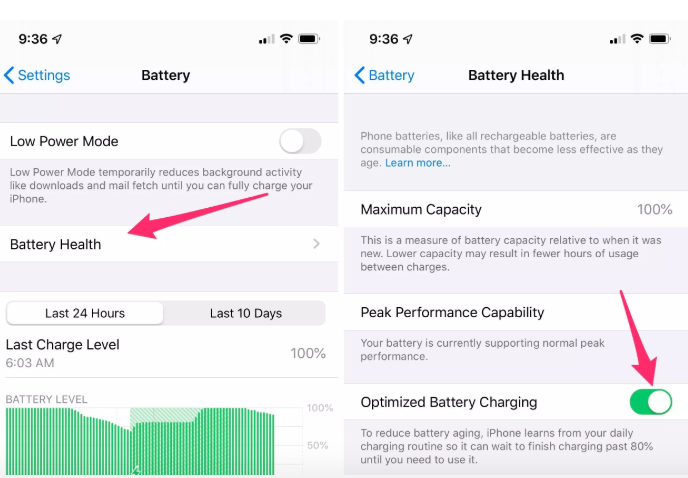
2. Use the new Scroll Bar
When you’re scrolling a webpage in Safari, a new Scroll Bar shows up on the right side of the screen. Only instead of just being a handy way to see where you’re at on a page, you can now use it to scroll faster. Try it out by starting to scroll on a page, then long-press on the scroll bar and drag it up or down. The faster you drag, the faster Safari will scroll.

3. Scan documents in the Files app
The revamped Files app now lets you scan documents and save them directly to your device or cloud storage with little effort. Open the Files app, select the Browse tab, tap on the three-dot icon in the top-right corner, then Scan Documents. Hold your device over the document you want to scan, and it should automatically capture the page. You can scan multiple pages into one PDF file and then save to iCloud, or import it into another app once you’re done.
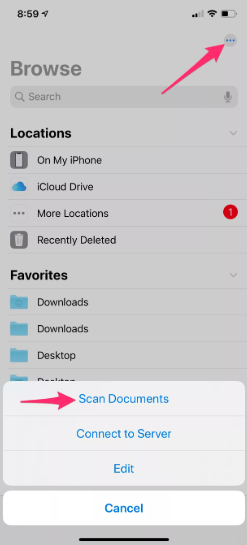
4. iMessage search actually works now
Searching for past messages in the iMessage app has always been horrible. It simply hasn’t worked. That’s changed. You can now search for a single word or phrase, and results are almost instantly displayed.
It’s pretty cool. To try it, open the Messages app, swipe down to reveal the search field and type. Neat, right?

5. Search your iPhone with your voice
Anywhere you find a search bar in Apple’s own apps, you’ll notice there’s now a microphone on the far-right side. Tap on the new icon to enter your search query by voice, instead of having to type it out.
Apps like Settings, Mail, Messages and the Today View are just a few examples of where you can find the new voice search option.

6. Delete apps from the update screen
Managing old apps you have installed on your iPhone or iPad is never a priority, or at least it isn’t for me. I know I’ve watched in the App Store as an app is updated, knowing full well I’ll never launch that app again. But because the app isn’t easy to find on my home screen, I don’t bother finding it and uninstalling it.
After installing iOS 13 or iPadOS, the next time you see an app you no longer need in the Updates list, swipe to the left across the listing and then tap Delete.
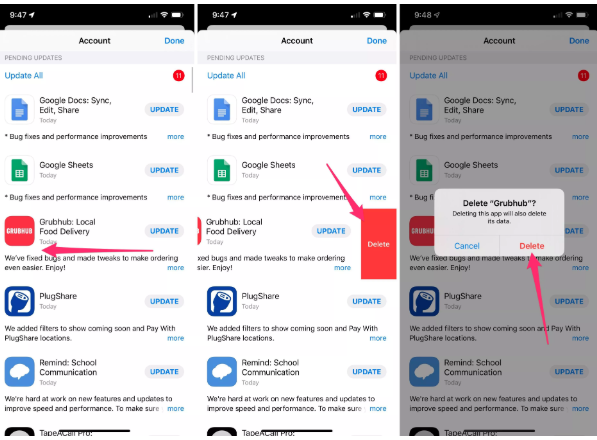
7. Use a mouse to control your iPhone or iPad
It’s true, you can use a mouse or trackpad to navigate your phone or tablet. The experience of using a mouse with your iPad takes some getting used to — there isn’t a typical mouse pointer. Instead, there’s a cursor that more or less mimics your finger.
You can assign shortcuts for specific tasks, such as going back to the home screen, in the new settings menu. Connect a mouse to your iPhone or iPad then go to Settings > Accessibility> Touch > Assistive Touch (turn this on) > Pointing Devices to customize how it works.
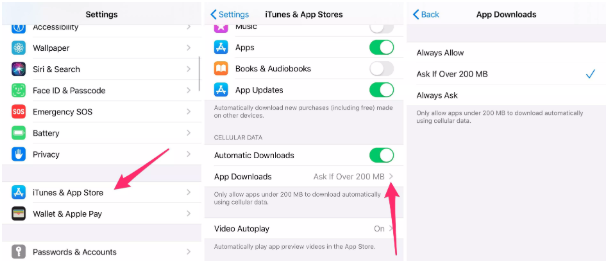
8. Remove app size limitations on cellular data
Apple has finally given us the option to remove App Store download limits. Meaning you can, if you want, download a game that’s over a gigabyte in size on your cellular data plan.
Go to Settings > iTunes & App Store > App Downloads to get rid of the limit or have the App Store ask you if you want to download any apps over 200MB.

9. Safari has a download manager
You can now download files when using Safari on an iPhone and iPad. The Download manager icon won’t show up unless you have an active (or recently active) download. Your download is automatically saved to a Downloads folder in your iCloud Drive account, which you can access in the Files app.
10. Long screenshots of websites
If you’ve ever had to take multiple screenshots of a webpage in order to capture the text of an article, you’ll be happy to know that iOS 13’s screenshot tool has a new trick. Open Safari and take one screenshot of any website and immediately tap on the thumbnail preview. Above the screenshot will be two options: Screen and Full Page.
The feature works in Safari, Pages, Numbers, Keynote, Mail, or Apple Maps.
Selecting Full Page will turn the entirety of the webpage you’re viewing into a PDF file that you can then crop, annotate and save to the Files app.
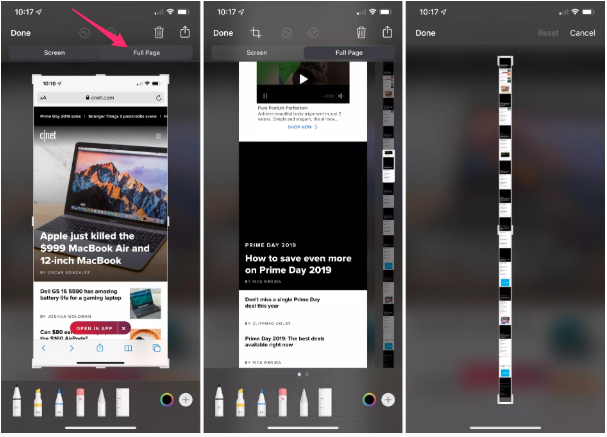
Enjoy!!

